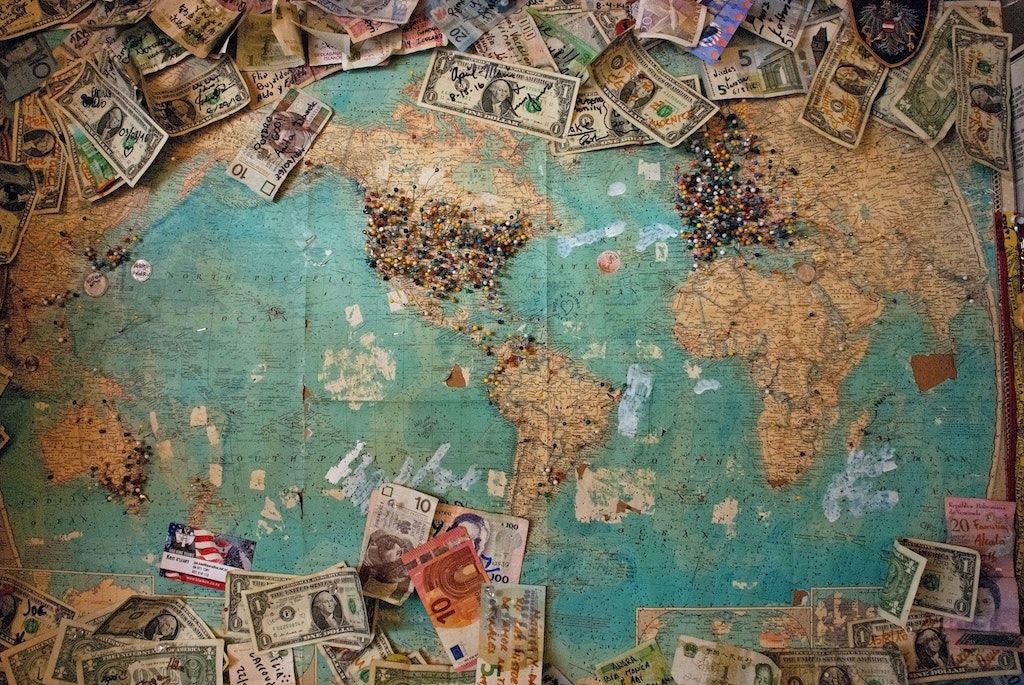
With the COVID-19 pandemic finally fizzling away, many people are now making plans to travel internationally again. Traveling with money typically entails finding the balance between safety and utility. On one hand, it is important to have a reasonable amount of travel money with you so you can sort out all necessary expenses. And, on the other hand, you do not want to become a victim of theft.
In this article, we will discuss the best way to travel with cash internationally. How much money you should bring, using other payment alternatives, the best options for currency exchange, and how to keep your money in a secure place while traveling.
So, How Much Money Should I Bring?
Calculating the amount of money you will need for your next trip will depend on a few important things. How long will your trip be? How many family members are traveling with you? What kind of activities are you planning? And, what locations are you planning to visit?
The general rule for calculating the exact amount you’ll need for a trip is to multiply $50 to $100 by the number of days you plan to spend on the trip. However, other factors can influence this, including your destination, accommodation, activities, and preferences.
While you may be tempted to bring as much money as you can, it’s not recommended to carry large amounts of cash with you. I do recommend, however, that you always carry a small amount of cash for any emergencies.
Note that if you’re carrying any amount above $10,000 us dollars, you will be required to declare it. This is a simple process that entails filing a few forms. Some countries also have different policies regarding foreigners coming in with cash. So, it is best to always research and find out what the policy for traveling with money is in the country you’re going to.
Use a Travel Budget Calculator
There are free online tools available for you to use, like the travel budget calculator. It is easy to use and can help you make a daily budget, which will give you a better idea of the exact amount of travel money you will need.
Consider Paying with Cards
As mentioned above, traveling with money, specially large sums of money, is not advisable. A good alternative to this would be to make as many payments with your bank cards as possible. Bank card payments are generally accepted in most countries. However, card payments will not always be an option. In these instances, you will need to have a reasonable amount of their local currency on hand. When traveling to small towns or less developed countries, take some extra cash with you.
It’s always a good idea to first do some research. Find out if card payments are accepted at your destination, and plan accordingly. I also recommend that you find out whether your specific credit card company works for international transactions. If it does, are there any foreign transaction fees attached?
Lastly, if traveling with money is not necessary, and you can pay with cards instead, using a credit card instead of a debit card is safer, as it protects your bank account even in the case of theft.
Bring Multiple Bank Cards
Traveling with multiple bank cards is a great way to ensure financial security and convenience while on the go. It provides a backup in case one card is lost, stolen, or declined, and also allows for access to different accounts and banks. Carrying multiple cards from different providers can also help avoid issues with merchants who may only accept certain types of cards or payment methods. For example, American Express is not accepted in many places.
If you don’t have a second travel credit card, traveling with money (an emergency stash) is necessary. If your card gets temporarily blocked, while you can resolve this issue with your bank, your cash will be your safety line.
Use ATMs Abroad Safely
When traveling in a foreign country, at one point or another, you will have to use an ATM machine to withdraw money. Using an ATM is a convenient and easy way to access your money while traveling internationally. However, there are some precautions that you should take to ensure that your transactions are safe and secure.
Firstly, before leaving for your trip, inform your bank about your travel plans, including the countries you will be visiting and the duration of your stay. This will help prevent your account from being flagged for unusual activity and potentially being frozen or blocked.
Secondly, when using foreign ATMs, choose one that is in a secure location, preferably inside a bank or a shopping center. Avoid using standalone machines that are located in isolated or poorly-lit areas, as they are more susceptible to theft and fraud.
Lastly, use a machine that belongs to your bank to avoid extra atm fees and to ensure that the machine is more secure. Additionally, make sure you are aware of your bank’s daily withdrawal maximum limit and the fees that may be associated with exceeding that limit.
Know When and Where to Exchange Money
To get the best foreign currency exchange rates, I recommend exchanging at your destination. Although you will be charged a service fee, it is still your best option.
Do note that airports offer the worst exchange rates and fees for their service. So, to get better exchange rates, it is always best to do it once you are at your final destination. Be careful, though. Ensure that the vendor is legit; otherwise, you risk getting scammed.
For ease, I also suggest you exchange a small amount at your home country before traveling. This way, you’ll have enough cash on hand for anything you want or need to buy at the airport, and a taxi to your accommodation.
Use Other Payment Alternatives
Research what options there are to make as many payments and purchases online. And, use tickets where possible. This is a great option when booking any activities or sites you plan to visit on your holidays. This way, you guarantee having an entry ticket, and you avoid traveling with money.
What to Do in Case of Theft
Experiencing money theft while traveling abroad can be a stressful and unfortunate situation. The first important thing to do is to report the criminal activity to the local police station and obtain a copy of the report for insurance purposes. Then, contact your bank or credit card company immediately to report the theft and cancel any affected cards. You can also consider informing your embassy or consulate for assistance and guidance on obtaining emergency cash or replacement documents.
Taking precautions to prevent theft while traveling is crucial for ensuring a safe and worry-free trip. By following the tips below, you can safeguard your money and enjoy your travels with peace of mind.
Safety Tips for Traveling with Money
As we have seen, flying with a lot of cash is not recommended, however, in some instances it is necessary. If this is the case, you are probably wondering how to keep money safe while traveling. No worries, I got you. Below are a few tips on how to hide money while traveling, so you and your money stay safe.
Use Discreet Storage Options
Always keep your money away from your checked bags. Those bags can be accessed by many people while they are out of your sight. If your money goes missing, it’ll be difficult to track or make a case for it.
So, where do you hide money while traveling? Your carry-on, handbag, or any hidden pocket! As long as it is always in your direct line of sight, you’re good to go. A good wallet alternative, depending on the amount of money you are traveling with, is a money belt.
Other safe spots to hide your money include, bra stashes and built-in pockets. Although these are not appropriate wallet alternatives, they can come in handy at the airport, bus station, train station, or when taking any public transportation.
It is always best to avoid conspicuous storage options like a fanny pack or travel purses, as these will automatically label you a tourist and make you more prone to theft.
Carry Different Denominations
One nifty trick I’ve picked up over the years is to carry different denominations of cash while traveling. A variety of small and big bills will be practical when you need to pay for something. It also makes it easy to keep your money safe.
Split the Money
Split your cash into different places; the small bills in your wallet for simple purchases and transactions, and the big bills in a more secure part of your bag, where it would not attract undue attention.
Invest in Anti-theft Bags
Depending on the amount of money you are traveling with, you should also consider getting a dummy wallet or an anti-theft bag. These are designed specifically for travelers and come with features such as steel cable reinforced shoulder straps, lockable zippers, slash-proof fabric, and hidden compartments that can slow down or deter pickpockets and thieves.
Ultimately, the ideal answer to how much cash you need will be: just enough. Enough money for an emergency, or to cover expenses that cannot be paid with cards. Instead, try using your cards as much as possible. Also, exchange money once at your destination. And, if absolutely necessary to bring cash, follow the tips above on how to keep money safe while traveling.
Plan ahead, do some research, carry minimal cash, and keep it safe!






